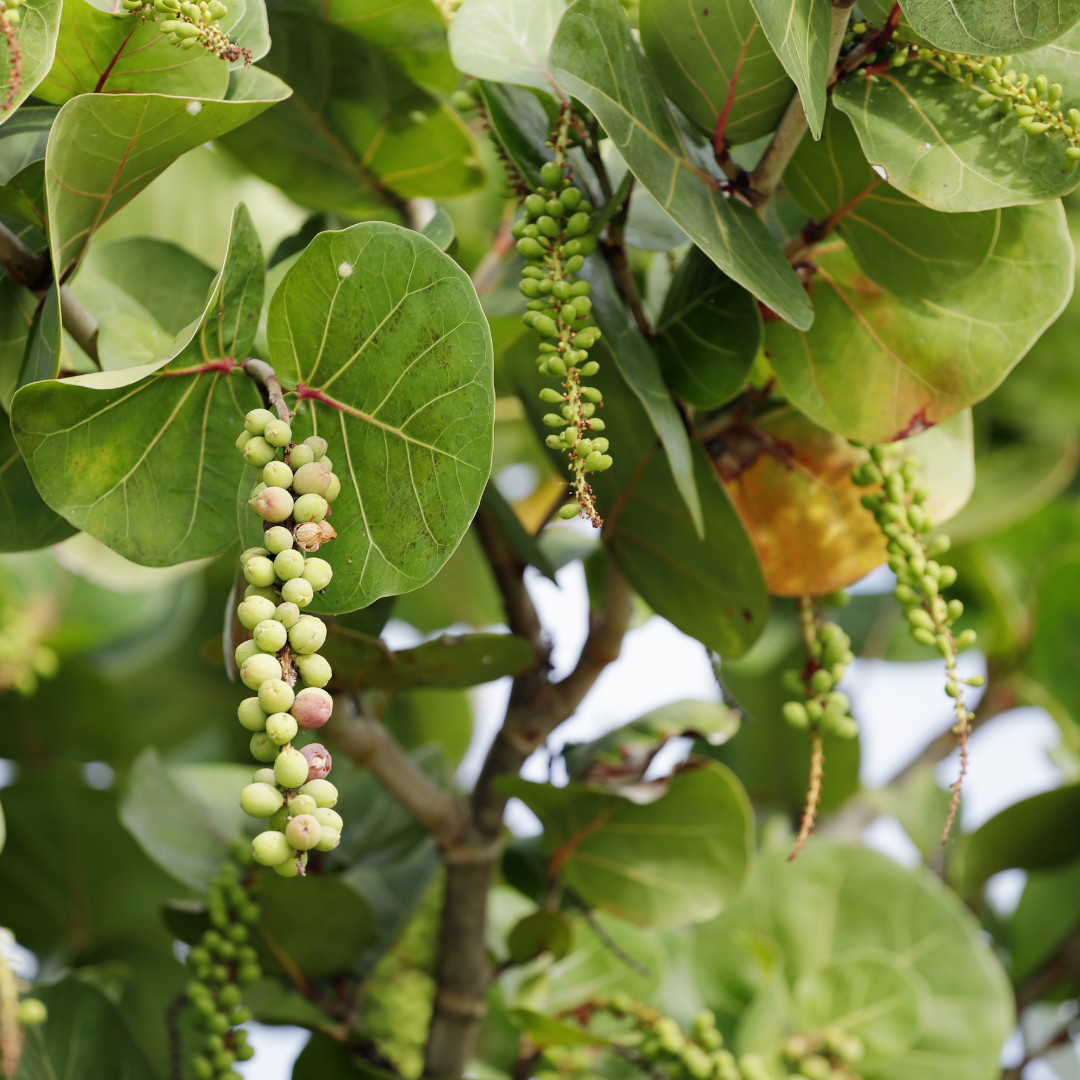Seagrape
If you live along the coastal areas chances are you are familiar with the Seagrape plant. Seagrape (Coccoloba uvifera) is widely used as a landscape plant in coastal areas because of its high tolerance to salt and wind. It may be used as a specimen tree, screen, or hedge, depending upon training and growing conditions.
In-spite-of its name, Seagrape is not truly a grape. Seagrape takes its common name from its coastal home and the clusters of red, grape-like fruits it produces. These fruits are edible and the taste is often compared to muscadine grapes.
Seagrape leaves are round, wide, and evergreen leathery leaves grow 8 to 10 inches in diameter impart a tropical look to the landscape. When young, the foliage is red in color and, as they mature they change color until they are green laced with red veins. The plant blooms with flowers of ivory to white, which blooming in long clusters. They usually bloom from spring to early summer but can occur year-round. The fruit set occurs in mid-summer, and the young fruits resemble green grapes on the vine (hence the name). The clusters deepen to a red or purple color as they ripen in the fall.
Seagrape trees can grow to a height of 25 to 50 feet when planted inland away from extreme salt and wind exposure.
Seagrape should be planted only in the warmer areas of southern Florida Zones 10A-11, and have a high tolerance of salty conditions and drought.











